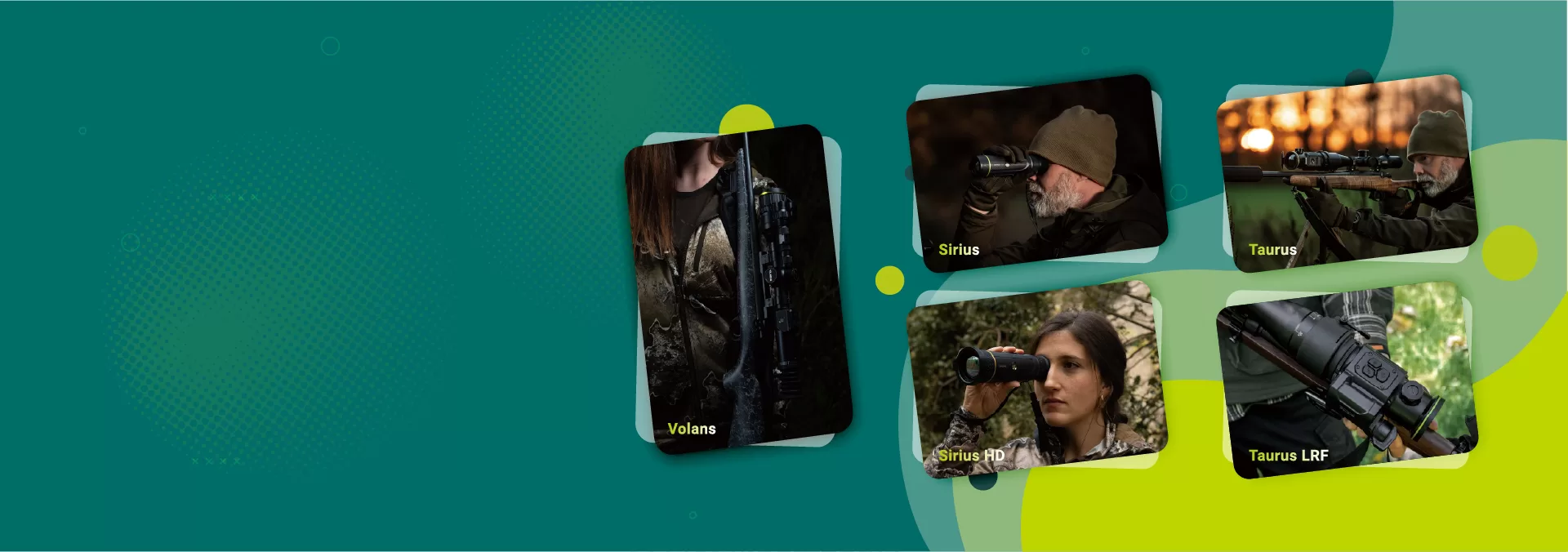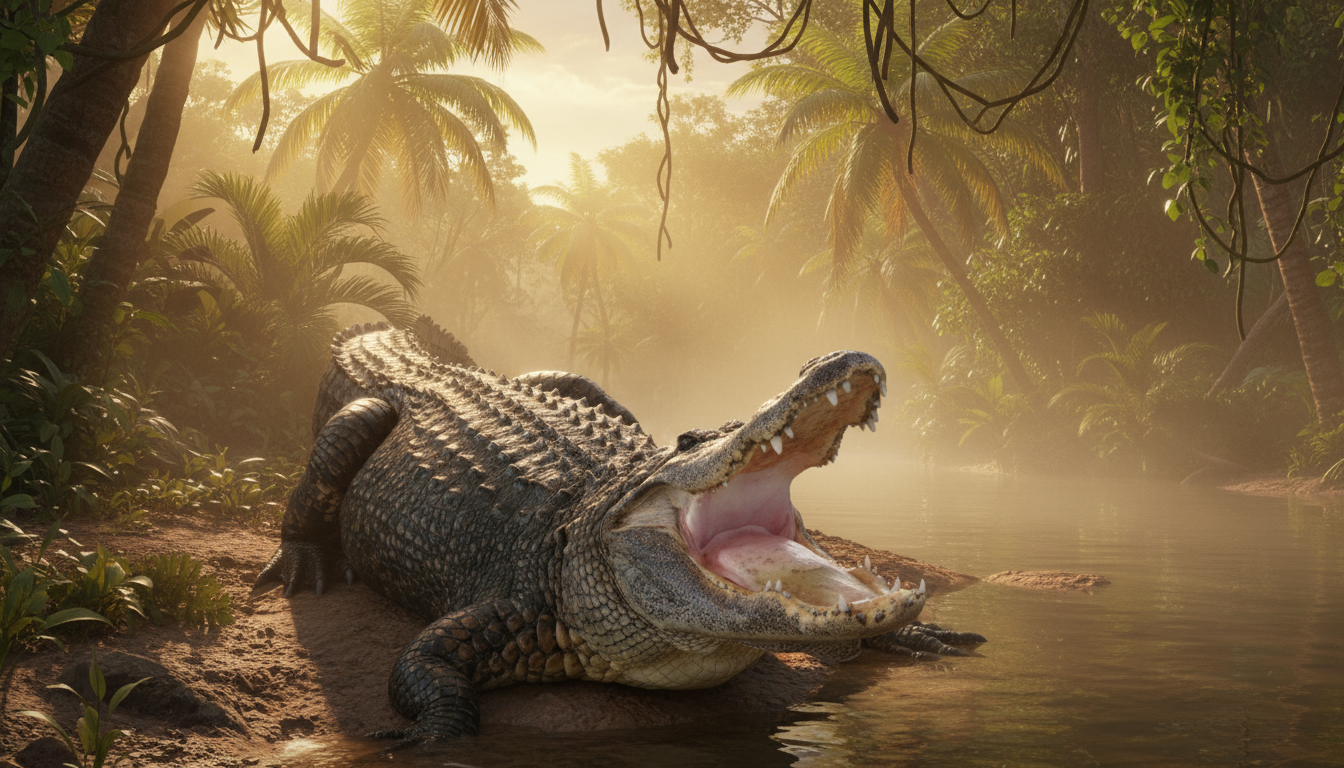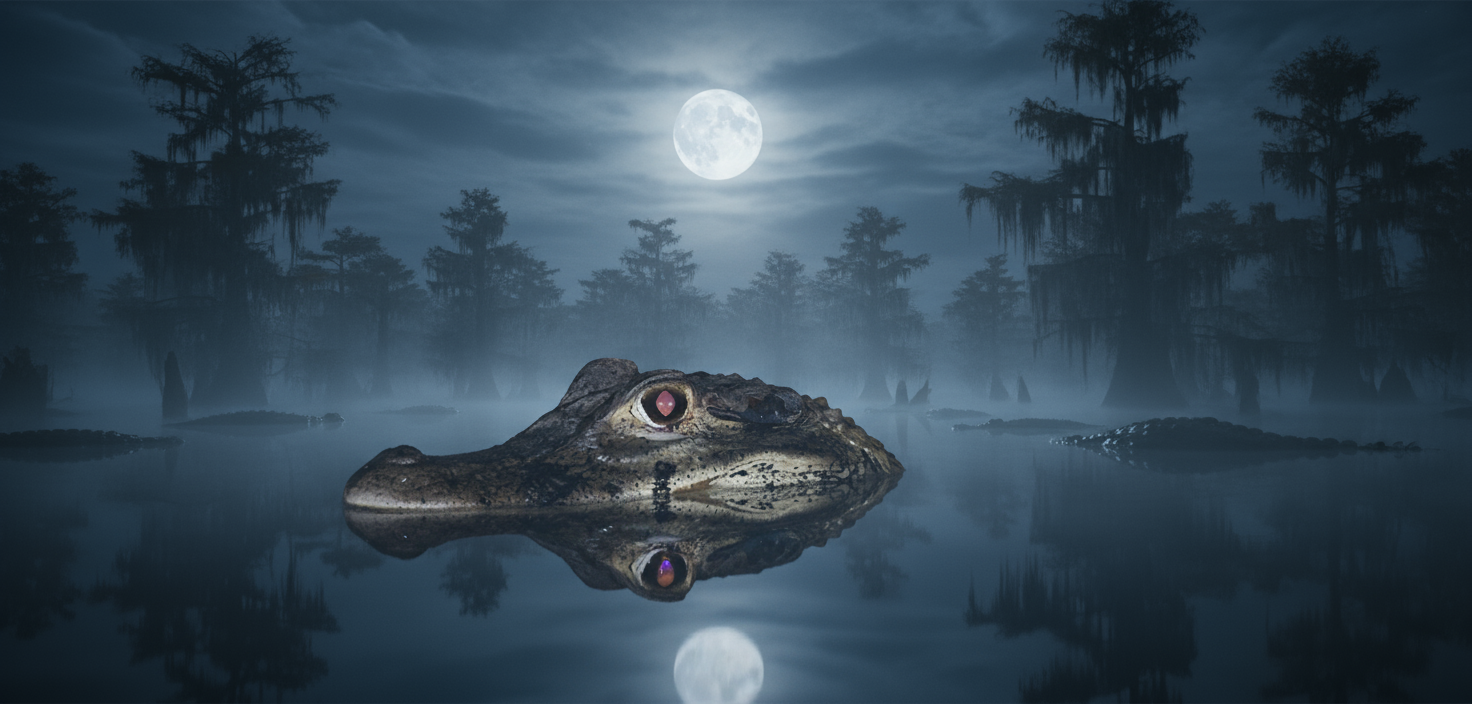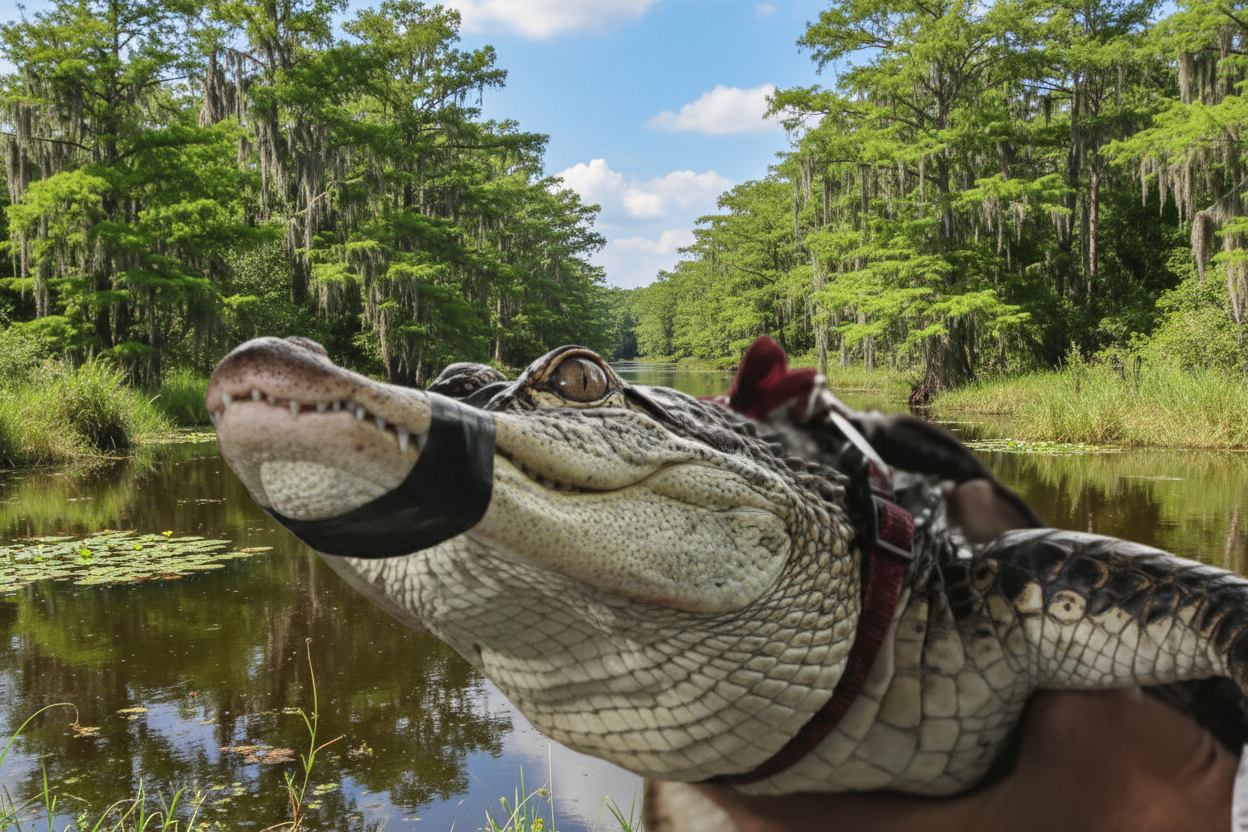When the sun dips below the horizon and darkness blankets Florida’s wetlands, something shifts in the waters. At night, alligators are most active, focusing on hunting and feeding from dusk to dawn. These prehistoric predators transform from lazy sunbathers into efficient killing machines, patrolling their territories with razor-sharp focus. If you’ve ever wondered what makes nighttime so special for these apex predators, you’re about to find out why the hours after sunset reveal their true nature.
Understanding alligator hunting behaviors after sunset isn’t just for hunters and wildlife enthusiasts—it’s essential knowledge for anyone living near or visiting gator country. Whether you’re planning your first nighttime adventure or just curious about these fascinating reptiles, we’re breaking down everything you need to know about what happens when gators come alive in the dark.
Are Alligators Nocturnal or Diurnal?
Although alligators basking in the sun are a common sight, making people think they are diurnal, they are actually nocturnal. But here’s where it gets interesting—their behavior isn’t quite black and white. According to scientific research, alligators are nocturnal, with an interesting tendency to be diurnal. They are most active at night but can also be active during the day.
Alligators are crepuscular animals, meaning they’re most active during dawn and dusk hours. This means you’ll see peak activity levels during those twilight periods when the sun is either rising or setting. During the day, gators spend most of their time basking in the sun to regulate their body temperature—a behavior called thermoregulation. But once darkness falls, they switch into hunting mode.
During the night, the alligator’s body adapts and becomes active enough to use more energy than during the day. This metabolic shift allows them to become the fearsome hunters they’re known to be. But the bottom line is that alligators are more active at night, making them more nocturnal than diurnal. Think of daytime as their rest and recharge period, while nighttime is when they get down to business.
Why Alligators Hunt More Effectively After Sunset
At night, alligators become more active hunters. They patrol their territory, seeking prey along shorelines and in marshy areas. Their enhanced nighttime activity stems from cooler temperatures and reduced human disturbance. But the real magic happens thanks to their specialized adaptations that turn darkness into their biggest advantage.
The cooler nighttime temperatures play a huge role. So cooler dusk temperatures prompt increased movement and hunting. By limiting activity and tuning their temperatures, alligators save energy for hunting at night. During the scorching daytime hours, gators would overheat if they were constantly active. Night provides relief from the heat, allowing them to move freely without the risk of overheating.
Another factor is prey availability. Many potential prey species are also active at night, making it an opportune time for alligators to hunt. Fish, frogs, small mammals, and birds all become more active during twilight and nighttime hours, giving gators a buffet of options. The darkness also provides cover, making it easier for these ambush predators to catch their prey off guard.
The Science Behind Alligator Eyeshine
If you’ve ever gone out on the water after dark with a flashlight, you might have seen dozens of glowing red eyes staring back at you. That’s alligator eyeshine, and it’s one of the coolest adaptations these reptiles have. The “eye-shine” or tapetum lucidum is a unique part of the alligator eye that provides light-sensitive retinal cells with extra photon-photoreceptor stimulation.
This reflective layer acts like a mirror, bouncing light back through the retina a second time. The layer is situated behind the photoreceptor cells in the retina and reflects light back, which increases the amount of light the alligator eye can detect. This dramatically improves an alligator’s vision in low light conditions, which is why gators are more active at night. Basically, they can see way better than us in the dark—like having built-in night vision goggles.
An alligator’s eyes will shine bright red when light is reflected off of them. This eyeshine is so distinctive that hunters and researchers use it to locate gators at night. In alligators, it glows red – one good way to locate alligators on a dark night. The greater the distance between its eyes, the longer the reptile, in this case, very long. So if you see two red dots far apart, you’re looking at a big gator.
For anyone interested in observing wildlife after dark, having the right equipment makes all the difference. A quality thermal monocular for hunting can help you spot these nocturnal predators from a safe distance, giving you a whole new perspective on their nighttime behaviors.
Hunting Techniques Alligators Use in Darkness
Alligators are nocturnal ambush predators, meaning they hunt primarily at night and rely on stealth and surprise. They usually lie in wait in murky, heavily vegetated swamps, marshes, or riverbanks, blending perfectly with their surroundings. Their hunting strategy is all about patience and precision.
Alligators primarily hunt at dusk or during the night. They lie motionless in wait for prey. This sit-and-wait approach is incredibly effective. A gator can remain perfectly still for hours, looking like nothing more than a log floating in the water. Then, when prey comes close enough—BAM—they strike with lightning speed.
But vision isn’t their only weapon. When the alligators are underwater, “they’re mainly relying on their mechanical sensory organs,” he explained. The animals have very sensitive pressure sensors in their snout that they use to detect vibrations around them. These sensors, called integumentary sense organs (ISOs), can detect the tiniest movements in the water. Even in complete darkness or murky water, a gator can sense a fish swimming nearby or a frog jumping into the water.
Interesting fact: Alligators attempted to capture prey most frequently during the night. However, research shows that while they hunt more often at night, alligators were most successful when hunting between 4:00 and 9:00 in the morning. This suggests that the early morning hours, right before and after sunrise, might actually be their sweet spot for successful kills.
Day vs. Night Gator Hunting: When to Hunt Florida’s Apex Predator
During daylight hours, alligators often bask in the sun to regulate their body temperature. This thermoregulation behavior makes them more predictable in their positioning, as they seek out sunny spots along banks, logs, or shallow waters. If you’re out during the day, you’ll find gators lounging around, soaking up rays, and generally being lazy.
Daylight hunting offers the obvious advantage of clear visibility. You can easily identify alligators basking on banks, logs, or floating at the surface. This visual clarity allows for better shot placement and reduces the risk of mistaking debris for an alligator. For beginners, daytime offers a safer and more comfortable hunting experience.
But nighttime is when things get really interesting. Nighttime brings increased alligator movement and feeding behavior. Gators become more responsive to calls and bait during these active periods. Their hunting instincts are heightened, making them more likely to investigate disturbances or potential food sources. The cover of darkness also reduces human activity on waterways, creating a more natural environment where alligators feel secure moving through their territory.
Alligators are nocturnal by nature, meaning they are more active after sunset. Using artificial lights and proper baiting techniques increases the likelihood of a successful hunt. Night hunting requires different equipment and techniques, but it offers the advantage of targeting gators when they’re most active and alert.
Feeding Patterns and Prey Selection at Night
Their prey selection seems to be determined primarily by size. An alligator’s diet depends on what is available to it, which means it will eat just about anything including fish, frogs, birds, turtles, insects, snakes, small mammals, other alligators, white-tailed deer, wild hogs, and sometimes people’s pets. These opportunistic feeders aren’t picky—if it moves and fits in their mouth, it’s on the menu.
The Crittercam results reveal that alligators are prolific hunters: “They’re attacking something once every two hours,” said study leader James Nifong, a doctoral candidate studying alligator ecology at the University of Florida in Gainesville. That’s a lot of hunting activity throughout the night. However, after a big meal, an alligator may lounge around for weeks before needing to feed again!
Their hunting methods are brutal and efficient. Once the prey is caught, it is typically swallowed whole. Alligators have tremendously powerful jaws that can crush turtle shells and the bones of small mammals. For larger prey that can’t be swallowed whole, the alligator will stash its kill underwater, pinning it under a submerged log or anywhere it can be wedged in for safe keeping.
Staying Safe During Alligator Active Hours
Never feed gators or swim or wade in waters where large alligators are known or likely to occur, especially at dusk or night (when they naturally feed). This is seriously the most important safety tip. When gators are in hunting mode, they’re looking for anything that resembles prey.
Alligators are nocturnal hunters. That crystal-clear swimming hole you see by day may be a prime hunting ground for gators come twilight. Respect these hunters and avoid swimming between dusk and dawn. Even if you’ve swum in a spot during the day without seeing any gators, that doesn’t mean they won’t be there at night.
If you’re exploring gator territory after dark, whether for research, photography, or just adventure, check out Pixfra’s outdoor rail products for mounting your thermal imaging equipment. Having the right gear setup can make your nighttime wildlife observation both safer and more successful. You can also explore more about nocturnal predators and animals that hunt in darkness to understand how alligators fit into the broader ecosystem of nighttime hunters.
It is illegal to feed alligators. When humans feed alligators, it causes the alligators to lose their natural fear of humans and to associate humans with food. Fed gators become dangerous gators, and they usually end up being destroyed by wildlife officials. So if you see a gator, enjoy watching it from a safe distance, but never, ever feed it.
What Time of Year Are Alligators Most Active at Night?
Seasonal patterns play a big role in alligator behavior. Florida alligators usually become most active during times when the temperatures are between 82 and 92 degrees Fahrenheit. They typically stop eating when the temperature drops under 70 degrees Fahrenheit and will become very sluggish when it’s less than 55 degrees Fahrenheit which may happen during some cold fronts in the winter months.
During warmer months—roughly from April through October—gators are at their most active. This coincides with their mating season, which runs from April through June. During these months, you’ll see increased nighttime activity as males patrol their territories and compete for females. After mating season ends, females build nests and guard their eggs, making them particularly aggressive and territorial.
As temperatures cool in late fall and winter, alligator activity drops significantly. They enter a state called brumation (similar to hibernation) where they become dormant and hide in gator holes or burrow into muddy banks. During these cooler months, nighttime hunting activity is minimal or nonexistent.
Frequently Asked Questions
What time do alligators come out to hunt at night?
Alligators typically become most active right after sunset and remain active throughout the night until dawn. Peak hunting activity occurs during the twilight hours of dusk and the early morning hours just before sunrise, when prey animals are also most active.
Can alligators see you in the dark?
Yes, alligators have excellent night vision thanks to a special reflective layer called the tapetum lucidum in their eyes. This adaptation allows them to see much better than humans in low-light conditions, making them highly effective nocturnal hunters.
Why do alligator eyes glow red at night?
Alligator eyes glow red when light hits them because of the tapetum lucidum, a reflective layer behind their retinas. This layer bounces light back through the eye, improving their vision in darkness and creating the distinctive red eyeshine that hunters and wildlife observers use to spot them.
Are alligators more dangerous at night than during the day?
Yes, alligators are generally more dangerous at night because that’s when they’re actively hunting and feeding. They’re more alert, mobile, and aggressive after sunset. Swimming or being near the water’s edge during nighttime hours significantly increases the risk of an encounter with a hunting gator.
How far can you see alligator eyeshine at night?
With a powerful spotlight or flashlight, you can detect alligator eyeshine from several hundred yards away in optimal conditions. The distance between the two glowing red eyes can help you estimate the size of the alligator—the farther apart the eyes, the larger the gator.









